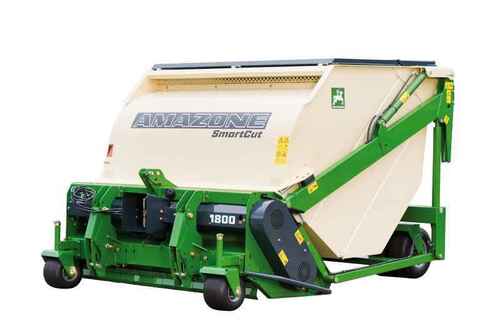Walk past any professional sports stadium or drive through farm country, and you’ll see something amazing – fields that look absolutely perfect. The grass is cut to exact heights, the soil is perfectly prepared, and everything looks neat and organized. What most people don’t realize is that behind all this perfection are some seriously impressive machines working hard to make it happen.
These aren’t your regular lawn mowers or garden tools either. The equipment that keeps farms productive and sports fields looking pristine is built for heavy-duty work. They’re designed to handle acres of land, work in all kinds of weather, and keep running day after day without breaking down. Understanding what these machines can do helps explain why some fields look so much better than others.
The Workhorses of Modern Agriculture
Farm equipment has come a long way from the days when everything was done by hand or with simple tools. Today’s tractors are basically computers on wheels. They can plant seeds in perfectly straight rows, apply fertilizer at exact rates, and even steer themselves using GPS technology. The precision is incredible – some modern planters can place seeds within centimeters of where they’re supposed to go.
Combine harvesters are another marvel of engineering. These massive machines can cut crops, separate grain from stalks, and clean everything in one pass through the field. A single combine can harvest more grain in one day than dozens of workers could handle in weeks using old methods. The grain comes out clean and ready for storage, while the leftover plant material gets chopped up and spread back on the field.
But it’s not just the big machines that matter. Farm and turf equipment includes specialized tools for soil preparation, weed control, and crop maintenance that are just as important for keeping operations running smoothly. Disc harrows break up soil after harvest, cultivators control weeds without damaging crops, and spreaders ensure fertilizer gets distributed evenly across every acre.
Turf Management Gets Technical
Professional turf management is way more complex than most people imagine. Golf courses, sports stadiums, and high-end commercial properties use equipment that’s engineered for perfection. The mowers that cut grass on professional fields are incredibly precise. They can cut grass to within millimeters of the desired height and create those perfect striped patterns you see on baseball diamonds and soccer fields.
Aeration equipment is another crucial part of turf management. These machines punch holes in the ground to allow air, water, and nutrients to reach grass roots. Without proper aeration, even the best grass will start looking thin and weak. Professional aerators can cover large areas quickly while maintaining consistent hole spacing and depth.
Top-dressing spreaders help maintain healthy turf by applying thin layers of sand or compost over existing grass. This equipment needs to distribute material evenly without burying the grass or creating lumpy spots. Getting this right requires machines that can control application rates precisely across varying terrain.
Specialized Tools for Specific Jobs
Different situations call for different equipment. Rough terrain requires machines with better traction and stability. Steep slopes need equipment with low centers of gravity and special safety features. Wet conditions demand machines that won’t compact soil or damage turf while they work.
Zero-turn mowers revolutionized both farm and turf maintenance by making it possible to maneuver around obstacles quickly. These machines can literally turn in place, cutting mowing time dramatically on properties with lots of trees, buildings, or other features to navigate around.
Brush cutters and rotary mowers handle areas that regular mowers can’t touch. They can cut through thick weeds, small saplings, and overgrown areas that would stop a standard mower dead in its tracks. Farmers use them to maintain fence rows and clear ditches, while turf managers use them for rough areas and seasonal cleanup.
Technology Changes Everything
Modern equipment uses technology in ways that seemed impossible just a few years ago. GPS guidance systems help operators work more efficiently and avoid missed spots or overlaps. Some machines can create detailed maps of fields, tracking which areas need more attention and which are performing well.
Variable rate technology allows equipment to automatically adjust application rates based on soil conditions or crop needs. A fertilizer spreader might apply more nutrients in one part of a field and less in another, all automatically based on soil test data loaded into the machine’s computer system.
Remote monitoring lets operators keep track of equipment performance from anywhere. They can see fuel levels, engine hours, and maintenance needs without walking out to check each machine. Some systems even send alerts when something needs attention or when scheduled maintenance is due.
Maintenance Keeps Everything Running
Even the best equipment needs regular care to keep performing at its peak. Professional operations schedule maintenance carefully to avoid breakdowns during busy seasons. Oil changes, filter replacements, and blade sharpening all happen on strict schedules.
Seasonal preparation is huge too. Equipment gets thoroughly inspected and serviced before heavy-use periods. Mowing equipment gets sharpened and adjusted before growing season starts. Harvest equipment gets checked over before crops are ready. This preparation prevents problems when there’s no time to deal with breakdowns.
Storage matters as well. Quality equipment represents a significant investment, and proper storage protects that investment. Climate-controlled buildings, regular cleaning, and winter preparation all help equipment last longer and perform better.
The Results Speak for Themselves
When you see perfectly maintained sports fields or highly productive farms, remember that specialized equipment made it possible. These machines represent decades of engineering development focused on solving real-world problems. They help farmers feed more people with less effort while helping turf managers create beautiful spaces for recreation and sports.
The investment in quality equipment pays off through better results, lower operating costs, and equipment that lasts for years with proper care. Whether it’s producing food or maintaining beautiful landscapes, the right machines make all the difference between good results and great ones.
